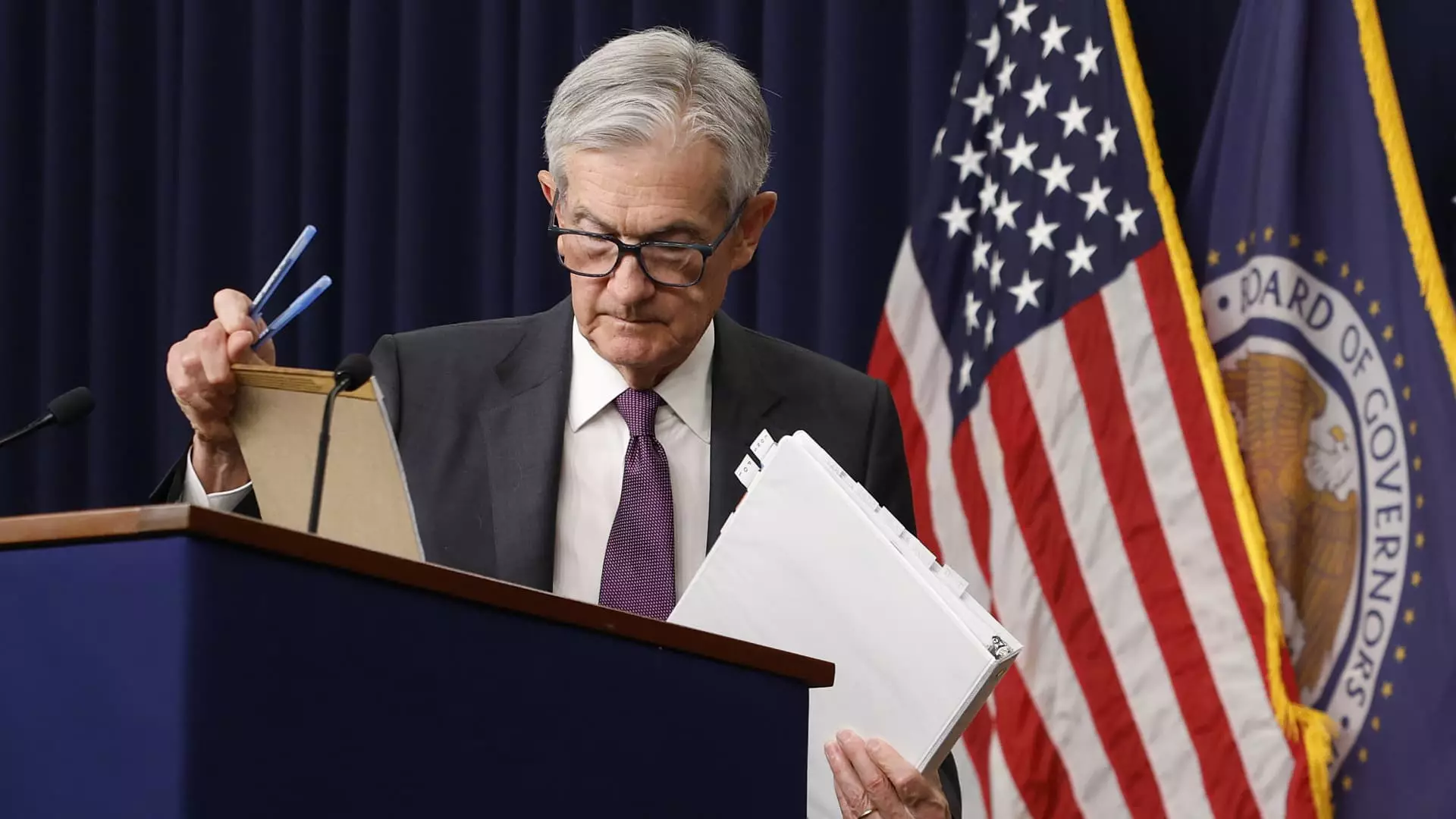In a strikingly candid address, Federal Reserve Chairman Jerome Powell has thrust a glaring spotlight on the precarious balancing act that the central bank faces in the current economic climate. The gravity of his message resonates: controlling inflation may soon come at the expense of supporting economic growth, putting the Fed’s dual mandate—maintaining stable prices while fostering full employment—at risk. This chess game of economics is becoming increasingly complex as the ramifications of President Donald Trump’s tariffs loom larger on the horizon. Powell’s remarks underscore a volatile intersection of growth and inflation that could leave policymakers in a quandary, creating more questions than answers at a critical juncture for the U.S. economy.
The question that hangs heavy in the air is: how will the Fed navigate this potential dilemma? Powell alludes to a scenario in which the central bank might be forced to prioritize one goal over the other. If inflation rates intensify while growth stagnates, the Fed’s decision-making arsenal will likely grow strained and it may have to confront some uncomfortable truths. This isn’t just academic speculation: real families and businesses could face dire consequences if interest rates are either hiked too quickly or, conversely, held too low for too long.
The Tariff Trap: A Self-Inflicted Wound?
Powell’s recognition that tariffs are “likely to move us further away from our goals” speaks volumes about their potential detrimental impact on the American economy. This viewpoint aligns well with the economic tenets of center-right liberalism, which predominate in arguments advocating for free trade and minimal government intervention. Rather than serving as a shield for domestic industries, tariffs act as a burdensome tax on consumers and businesses alike. They risk igniting inflationary pressures that could spiral out of control, thus eroding purchasing power and driving down consumer confidence.
In this light, it is clear that the tariffs enacted do not merely impose a one-time cost; they have the potential to instigate a prolonged economic malaise. Powell’s warning that inflation could become more persistent poses a fundamental challenge: as prices rise, the ability of everyday Americans to afford goods diminishes. And yet, this self-inflicted wound appears to be rooted in an ideology that often favors short-term political victory over long-term economic stability.
The Economic Indicators: A Mixed Bag of Signals
The complex signals from various economic indicators coupled with Powell’s insights spark an urgent need for clarity. Retail sales numbers released recently seem promising—showing a 1.4% increase—but it’s crucial to dissect the underlying factors. Much of this growth stemmed from consumers rushing to make purchases before tariffs took effect; a classic case of short-term gains masking potential long-term downturns. This reactive behavior underscores a sense of uncertainty that permeates the marketplace, a condition that is typically toxic to economic prosperity.
Moreover, the impending GDP report for the first quarter raises alarms. Economists project a mere stagnation in growth that could be exacerbated by inflated imports in anticipation of the tariffs. Decisions based on uncertainty often lead to unnecessary volatility; with businesses hamstrung by fears over fluctuating costs, the natural drive to innovate and invest is stunted. An economy in stasis is far more dangerous than one that experiences natural ebbs and flows.
The Fed’s Position: Waiting for Clearer Waters
As he articulated the challenges ahead, Powell’s assertion that the Fed is “well positioned to wait” until more clarity emerges could be interpreted as prudent or painfully passive. While it’s important for the Fed to avoid impulsive changes to monetary policy, the stakes are high. Can the institution really afford to wait and see? This approach might lend itself to a degree of caution, yet there remains a fear that inaction could further distort the balance between inflation and growth.
As markets deftly fluctuate in response to Powell’s rhetoric, one wonders if there’s a growing order of urgency. The Fed’s ability to anticipate inflationary trends and act before they manifest will be crucial. The expectation from market participants that interest rates might soon descend, as suggested by the CME Group’s metrics, is riddled with complications. If the Fed cuts rates in a bid to revive growth while inflation climbs, it could inadvertently ignite an even fiercer inflationary spiral.
An American Dilemma: Navigating Uncertainty
Powell’s speech serves as an urgent call to action within a landscape fraught with contradictions. Tariffs, designed purportedly to protect American interests, could instead exacerbate the inflation problem while stifling growth. The Fed’s delicate response will shape the economic narrative in the months to come. This period of uncertainty is an opportunity for reflection and recalibration, but whether America’s leaders will leverage this moment remains to be seen. The macroeconomic arena is a delicate one—move too slowly, and the country risks being caught in a storm of its own making. It’s a high-stakes dance, requiring a masterful balance that both Powell and the broader administration must navigate expertly.

